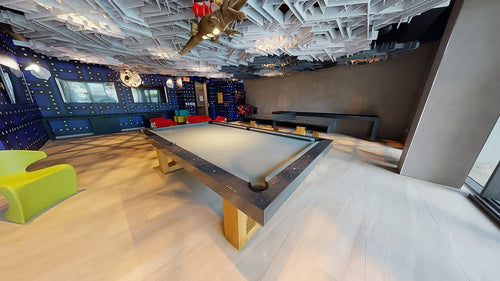Enjoy our modern designs
Estimated Read Time: 8 mins |
Interior design has outgrown its decorator roots and evolved into a fully regulated profession—one that blends creative vision with building science, human wellness, and business savvy. Whether you’re a high‑school senior, a career‑switching architect, or a seasoned practitioner chasing the next credential, this guide breaks down the history, pathways, curriculum, licensing, and lifelong learning that shape modern interior designers.
1. How We Got Here: From Overlap to Professional Clarity
Early 20th‑century blur saw architects’ assistants, decorators, and craftspeople all claiming “interior design.” Post‑WWII booms created dedicated firms in the U.S., followed by Europe. Formal curricula and accreditation emerged to guarantee competence in codes, building systems, and sustainability, raising the profession’s stature.
2. Who Interior‑Design Education Serves
| Audience | Typical Goal | Best‑Fit Programs |
|---|---|---|
| Aspiring professionals | Full‑time design careers | BA/BDes, BFA, AAS degrees |
| Career changers | Quick skills & portfolio | 1‑year diplomas, intensive certificates |
| Educators & advisors | Guide students effectively | Graduate‑level research, pedagogy workshops |
| Lifelong learners | Keep skills current | CEUs, online modules, MA/MSc/PhD programs |
3. Choosing the Right Course
3.1 Define Your Endgame
- Interior decoration → focus on style, color, furnishings.
- Interior design → add space planning, building systems, accessibility.
3.2 Check Accreditation
- US: CIDA‑accredited degrees feed directly into NCIDQ licensing.
- UK/EU: BAC, OFSTED, national quality councils.
- Vocational: City & Guilds, industry‑endorsed fast tracks.
3.3 Pick a Delivery Format
- Full‑time on campus (3–4 yrs)
- Part‑time/evening (1–2 yrs)
- Distance/online for remote learners
- Short boot camps (Revit, sustainable materials)
3.4 Know the Entry Requirements
- GPA and SAT/ACT in the US, A‑levels in the UK.
- Portfolios often override grades for mature students.
4. What You’ll Learn: Core Curriculum & Competencies
| Domain | Key Takeaways |
|---|---|
| Design Foundations | History, theory, color psychology, lighting, material texture |
| Visual Communication | Freehand sketching, CAD (AutoCAD, Revit), 3D modeling, Adobe CC |
| Human‑Centered Design | Ergonomics, anthropometrics, inclusive and aging‑friendly layouts |
| Technical Integration | HVAC, electrical, plumbing, smart controls, LEED & sustainability |
| Materials & Furniture | Fire ratings, durability, finish psychology, branded specification |
| Studio Projects | Real briefs, critiques, capstone shows |
| Professional Prep | Portfolio curation, internships, competitions, field trips |
5. Mentorship and Community Matter
Faculty mentors fuel creative risk‑taking and technical depth. Alumni networks open doors to internships and jobs. Associations like ASID, IIDA, BIID provide ethics frameworks, CEUs, and networking.
6. Trends Reshaping Interior‑Design Education
- Flexible Learning: MOOCs, hybrid studios, VR‑enabled labs for global collaboration.
- Expanded Curriculum: Carbon‑footprint analysis, universal design, business law, project finance.
- Advanced Research: MA/PhD in spatial psychology, smart‑city interfaces, AI-driven analytics.
7. Accreditation, Licensing, and Public Protection
NCIDQ (US): Verifies fire safety, accessibility, and ethics.
European charters: Vary by country, trending toward mandatory registration.
Emerging markets: Russia, Asia, Middle East adopting licensure for credibility.
8. Launching—and Sustaining—Your Career
- Network early through internships and career fairs.
- Specialize smartly—niches like healthcare or hospitality pay.
- Keep learning with CEUs, conferences, and software skills.
Modern interior design demands accredited education, rigorous technical training, ethical licensing, and relentless upskilling to deliver spaces that perform flawlessly and endure. By choosing the right program, mastering core competencies, nurturing mentorships, and embracing future‑focused learning, you’ll be equipped to create interiors that uplift, inspire, and stand the test of time.


















